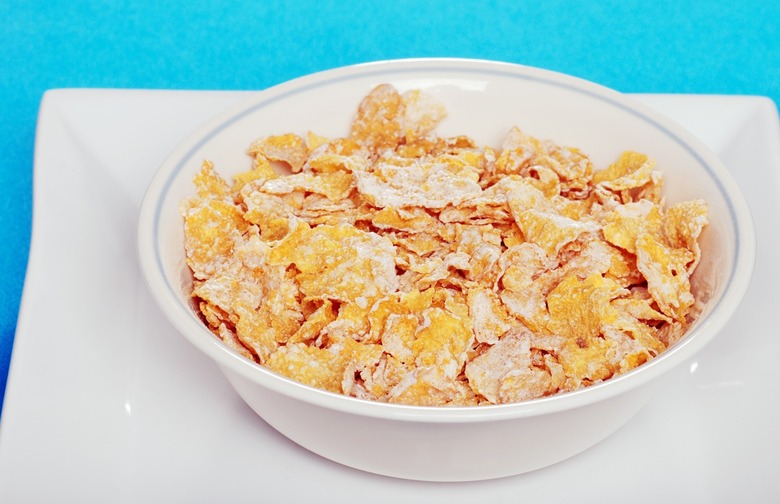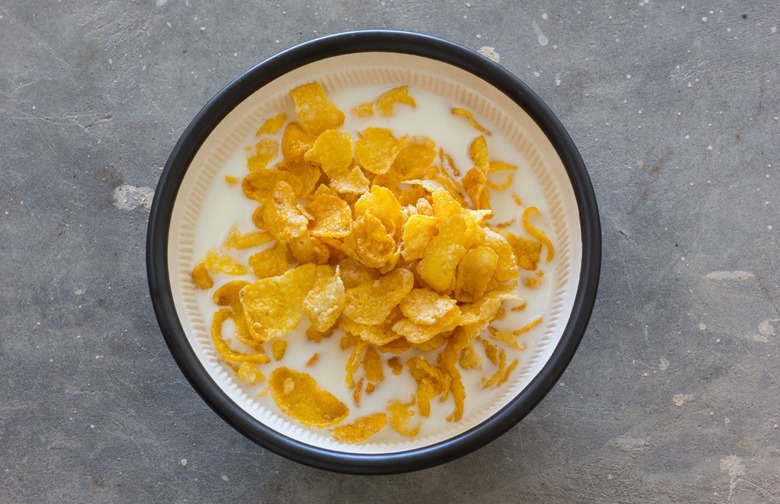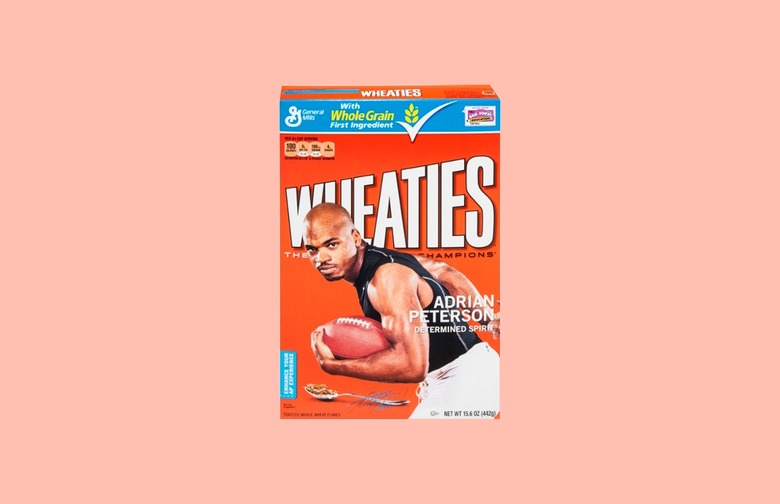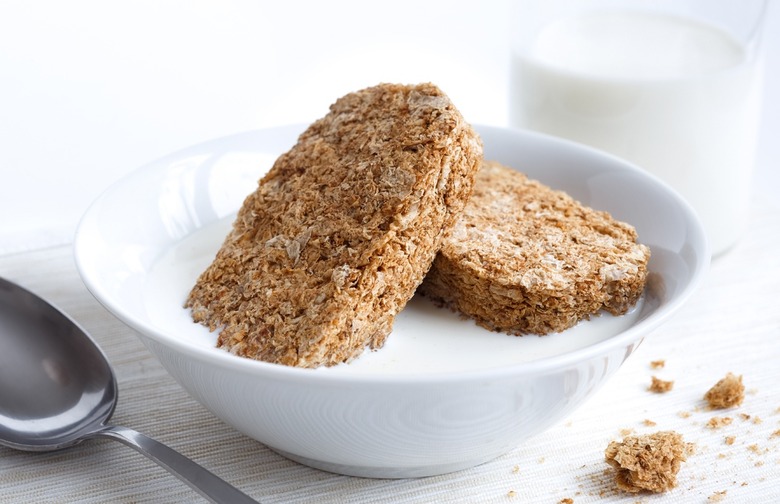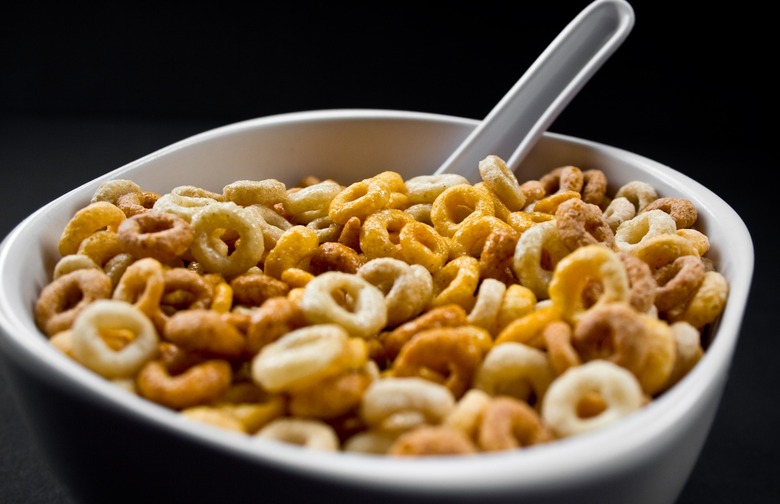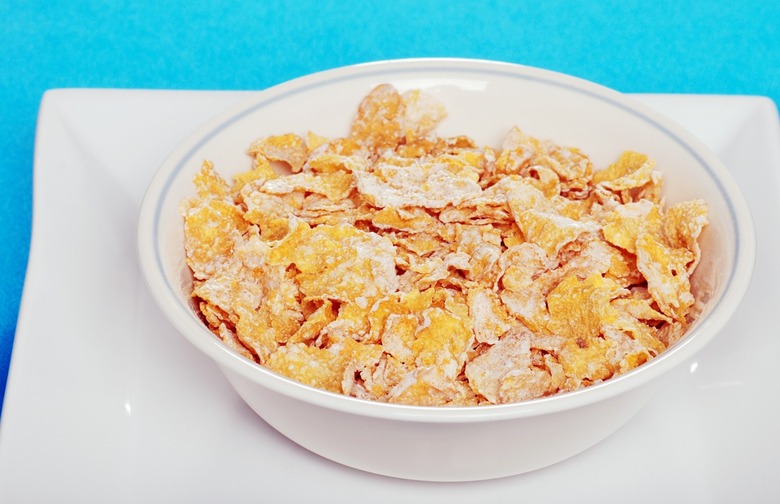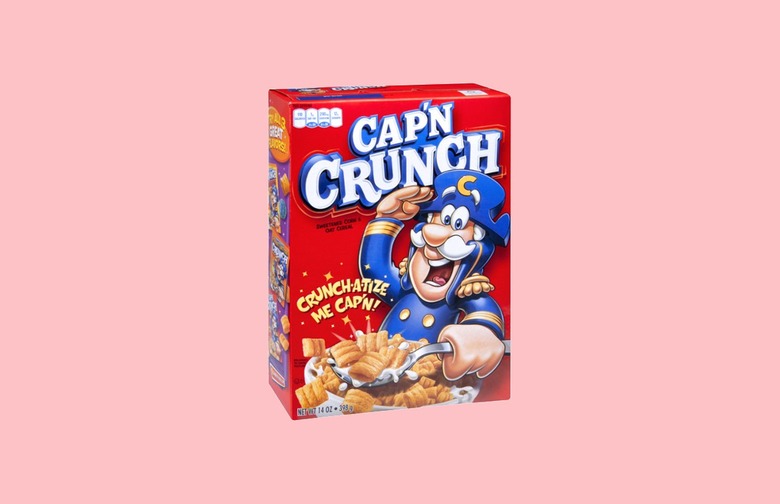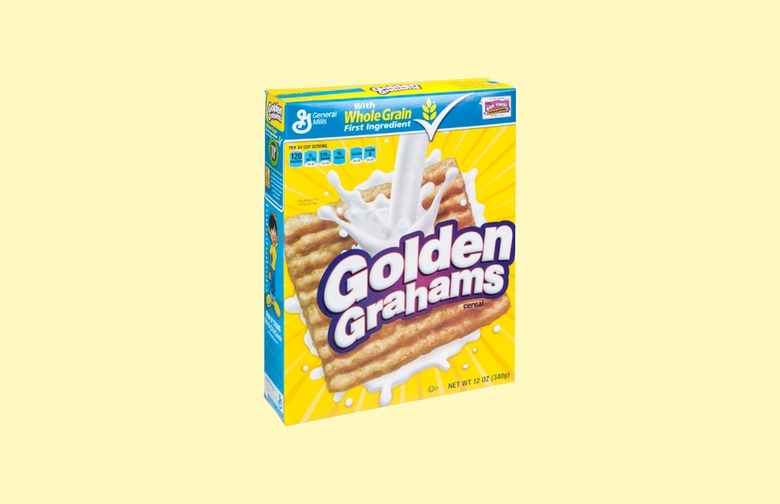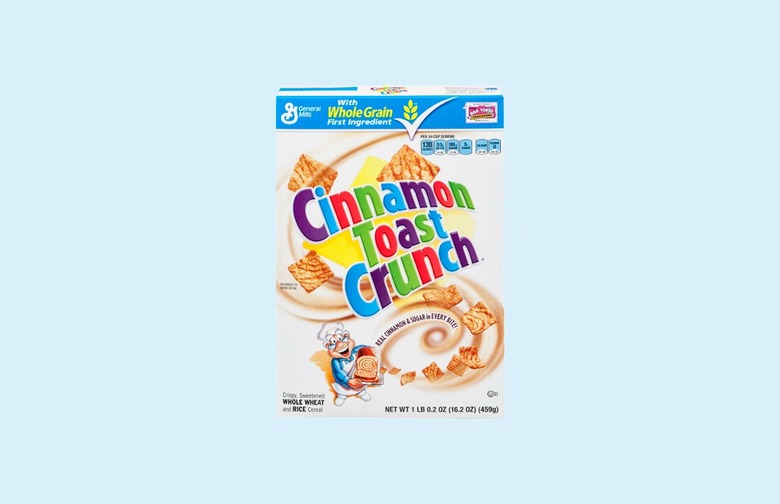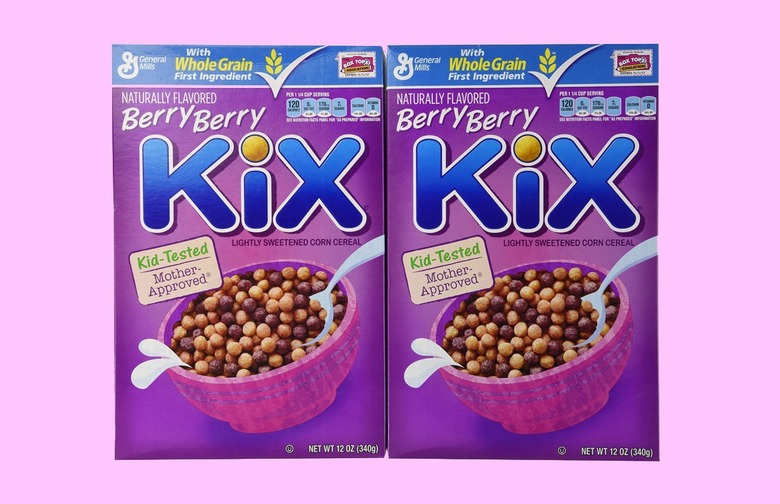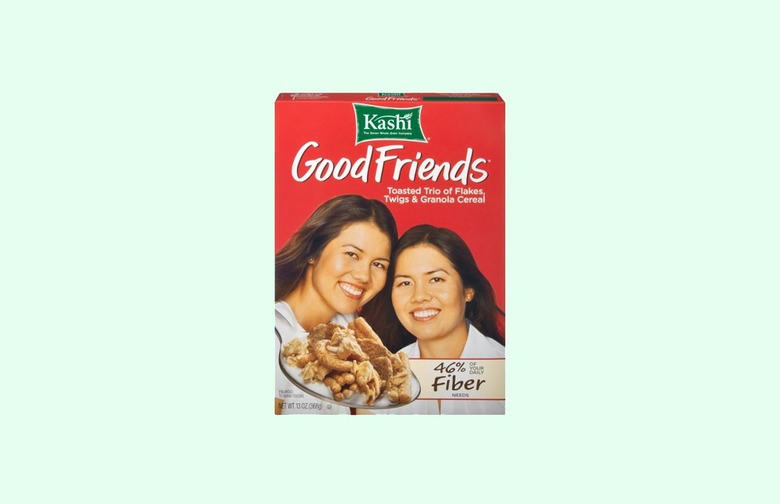The Most Popular Breakfast Cereals Through The Decades
While specific dining trends have come and gone, the types of foods we eat for each meal have remained fairly constant over the past century. For dinner, we'll have some meat with a vegetable and starch. For lunch, a salad or sandwich. And for breakfast? Eggs, bacon, and, of course, a bowl of cereal. Every decade sees the arrival of new cereals that capture the public's attention, and we've rounded up the most popular cereals of past decades.
1910s
Kellogg's Corn Flakes hit the market in the early years of the twentieth century, and by the "aughts" they had caught on in a major way. Shredded Wheat and Grape-Nuts were also a major player in the cereal scene during this decade, while Kellogg's All-Bran was introduced in 1916 and was an immediate success.
1920s
Wheaties, which was introduced to the American public in 1924, began its association with sports in 1927, cementing its legacy in both the cereal and sports worlds. Rice Krispies were also released in 1928 and have been popular since. The first Raisin Bran hit the market in 1926, manufactured by U.S. Mills.
1930s
The 1930s weren't an especially banner decade for new cereal releases, with short-lived products like Kellogg's Wheat Krispies and Post Huskies coming onto the scene. A couple cereals emerged during this decade that left their mark, however: Kix (1937), Chex (1937), and British import Weetabix.
1940s
Cereal rebounded in a big way in the 1940s, with the big success story of the decade being General Mills' Cheerios, which were introduced in 1941 as Cheerioats. Both Kellogg and Post introduced their own Raisin Brans in 1942, leading to a major boom in the Raisin Bran market, and Post introduced Sugar Crisp in 1948, which today is known as Golden Crisp and ushered in the era of sugar-bomb cereals.
1950s
The 1950s marked the beginning of the Golden Age of Cereal, when the rise of the Baby Boomers resulted in an onslaught of sugary cereals marketed to children, most with the word "sugar" right there in the name. Sugar Frosted Flakes hit the market in 1952; the "Sugar" was dropped in 1983. Sugar Pops were introduced in 1951; the name was changed to Sugar Corn Pops in 1978 and to Corn Pops in 1984. Sugar Smacks were introduced in 1953; they were renamed Honey Smacks in the 1980s. Trix, Special K, Cocoa Puffs, Alpha-Bits, and Cocoa Krispies were also rolled out during the '50s (did we mention that this was a golden age?).
1960s
Many more cereals that are still with us today were introduced in the 1960s, a time when some breakfast cereals finally started going out of their way to include some vitamins. Cereals rolled out during this decade include Life (1961), Total (1961), Froot Loops (1962), Cap'n Crunch (1963), Lucky Charms (1964), Apple Jacks (1965), Honeycomb (1965), Crunch Berries (1967), and Peanut Butter Crunch (1969).
1970s
The Golden Age of Breakfast Cereals continued through the 1970s, with the arrival of plenty of legendary cereals that are still with us today. Those include Fruity Pebbles and Cocoa Pebbles (1971), cult favorites Franken Berry and Count Chocula (1971), Nature Valley Granola (the first mass-market granola, 1973), Golden Grahams (1975), Cookie Crisp (1977), Cracklin Oat Bran (1977), and Honey Nut Cheerios (1979). What we can only imagine were some pretty serious drugs also made their way into the cereal world in the '70s, with short-lived cereals with names like Mr. Wonderfull's Surprize, Grins & Smiles & Giggles & Laughs, and Moonstones hitting the market.
1980s
Bite-size Frosted Mini Wheats were introduced in 1980, kicking off a decade that became known for lots of novelty cereals (Smurf-Berry Crunch, anyone?) but not too many that have stood the test of time. Thankfully, '80s success stories include Crispix (1983), Cinnamon Toast Crunch (1984), Mueslix (1987), and Honey Bunches of Oats (1989).
1990s
The 1990s saw the arrival of plenty more limited-time movie tie-in cereals (we're partial to Bill & Ted's Excellent Cereal), and it's clear that the creative well began to run dry during this decade. Popular cereals introduced in the '90s included Teddy Grahams Breakfast Bears (1990), Marshmallow Alpha-Bits (1990), Basic 4 (1991), Berry Berry Kix (1992), Rice Krispies Treats Cereal (1993), Reese's Peanut Butter Puffs (1994), the recently-returned French Toast Crunch (1995), and Oreo O's (1998).
2000s
The new millennium has been a rough one for breakfast cereals, with sales in decline largely due to the low-carb craze (and because people don't want to clean up after themselves). Healthy food company Kashi hit the scene in a big way in 2001 with its Good Friends cereal, which is still popular, and other original cereals from the past decade and a half that have stuck around include Smorz (introduced in 2003, discontinued in 2013, and brought back in 2015), Smart Start, and Crunchy Nut (which has been around in the U.K. since the '80s but was introduced to the U.S. market in 2011).
Thankfully, more and more healthy cereal companies have hit the scene in the past 15 years, and are taking market shares away from the big guys, who are competing to keep up. These include Cascadian Farm, Barbara's (and its popular Puffins), Nature's Path, and Bear Naked.
If anything, the 2000s has been the age of brand extensions for the legacy cereal companies, who find themselves reformulating old standbys into countless spinoffs that you may not even know existed. Examples include Strawberry Chex, Colossal Froot Loops, Berry Lucky Charms, Chocolate Honeycomb, Peanut Butter Toast Crunch (which we admit are pretty awesome), Mini Trix, and Raisin Bran with Cranberries. Just like in Hollywood, reboots are all the rage.
